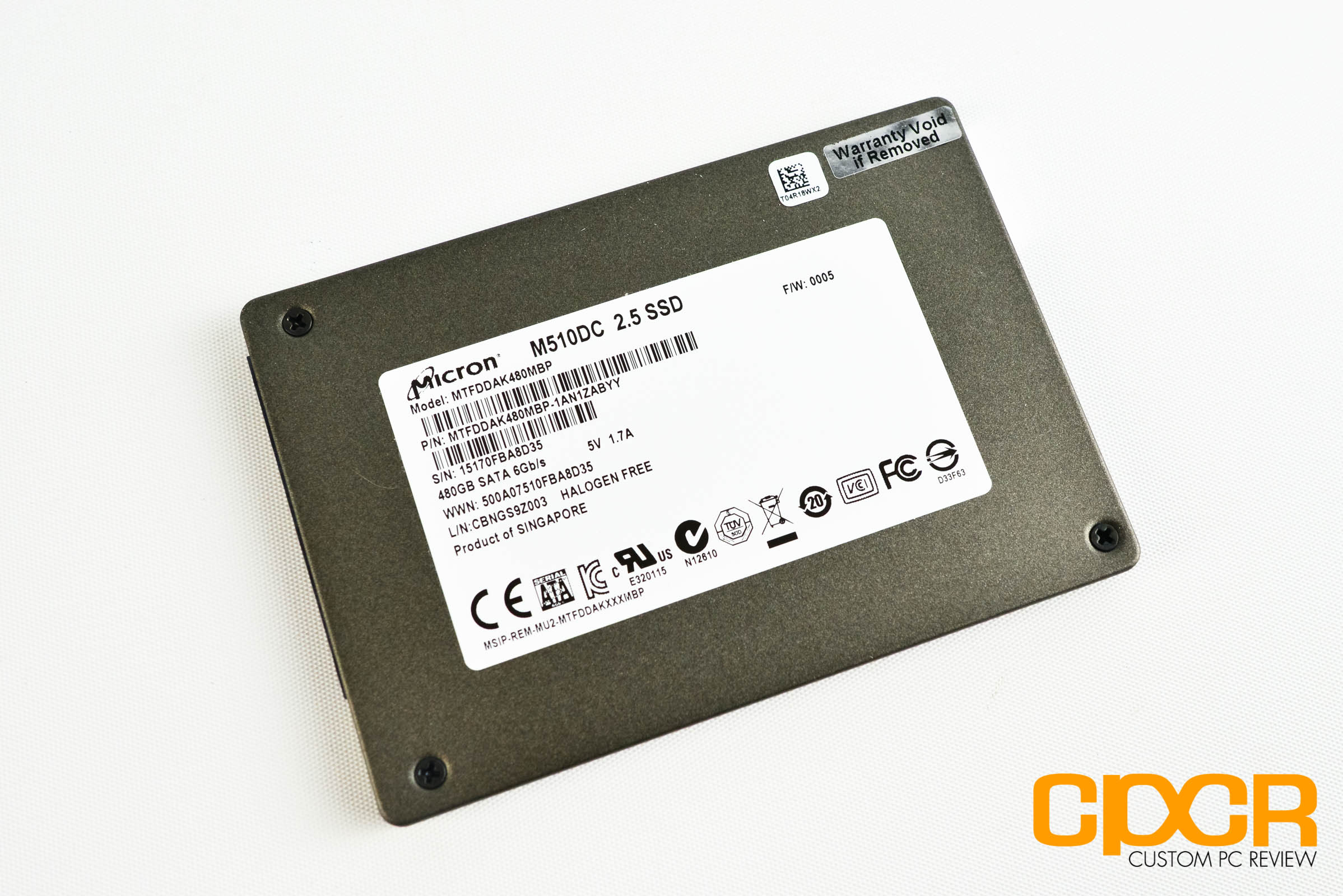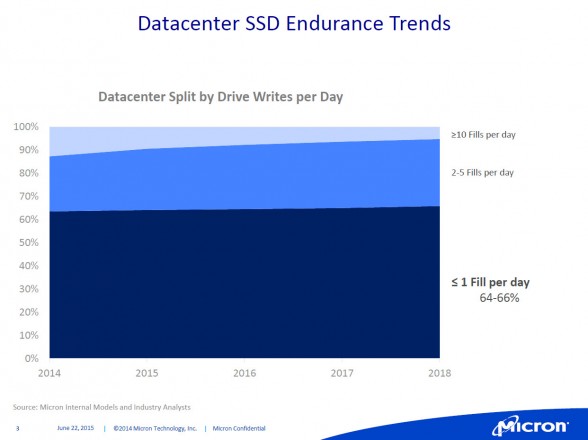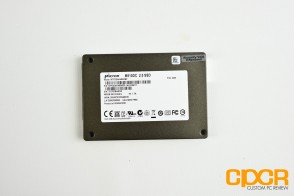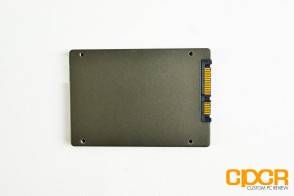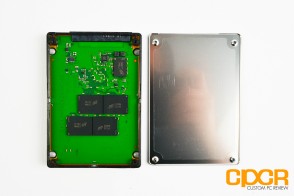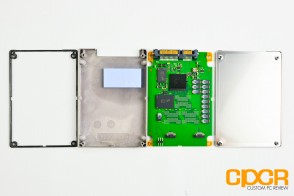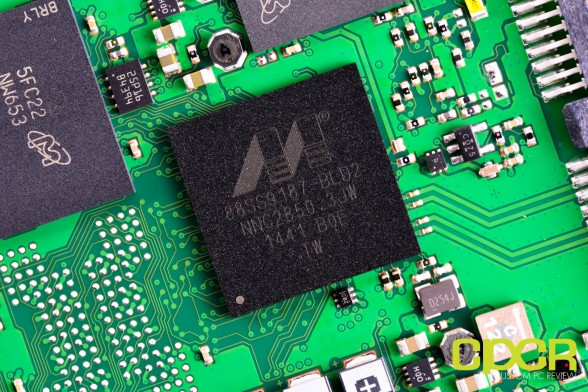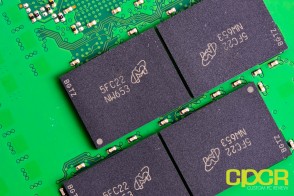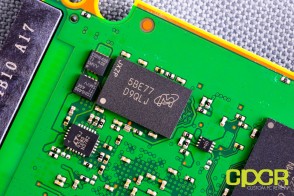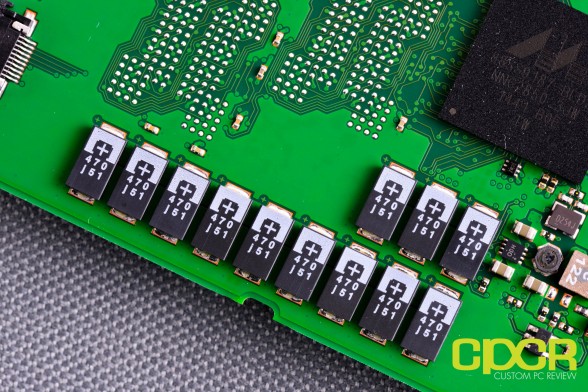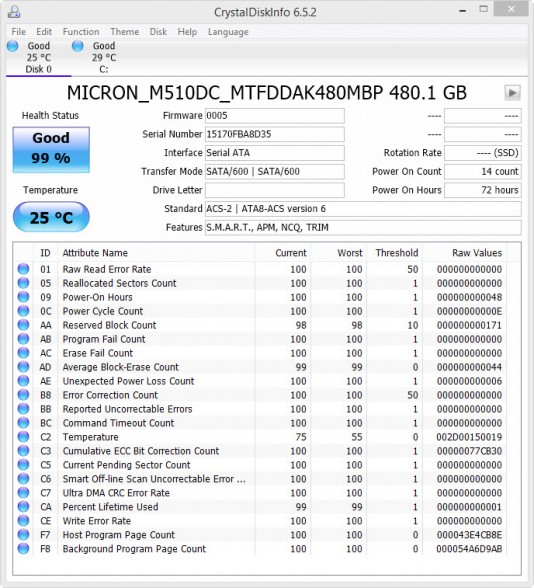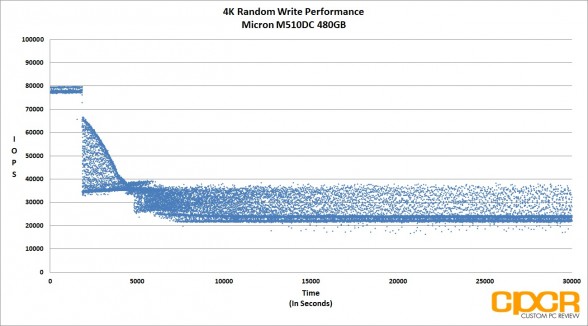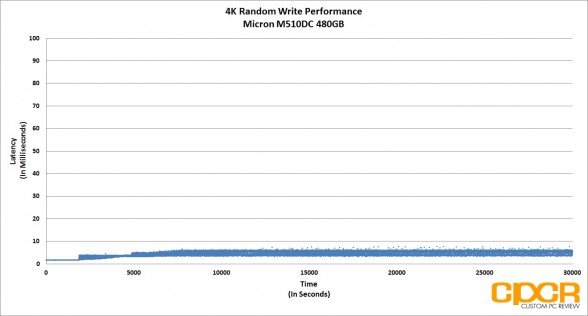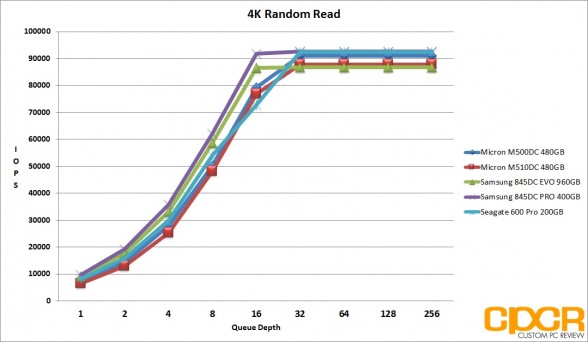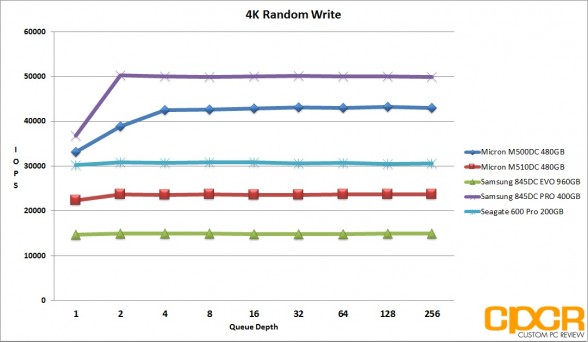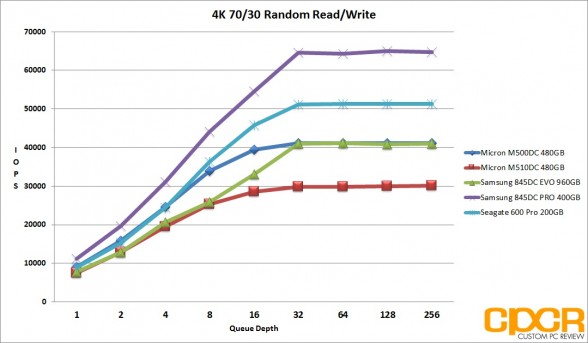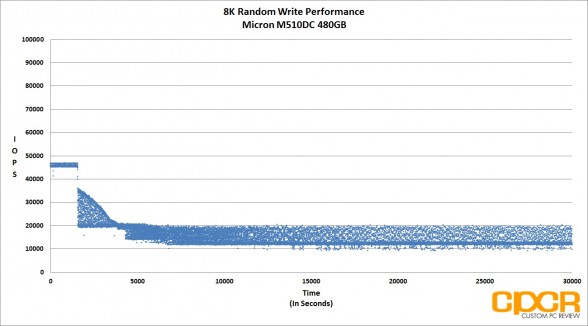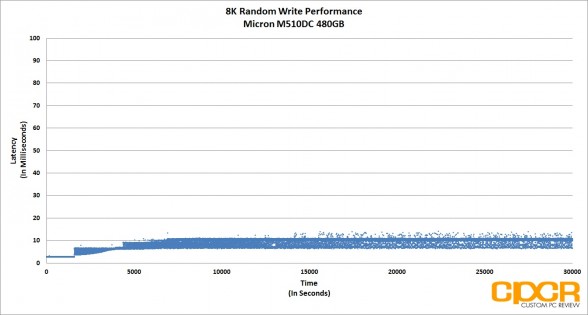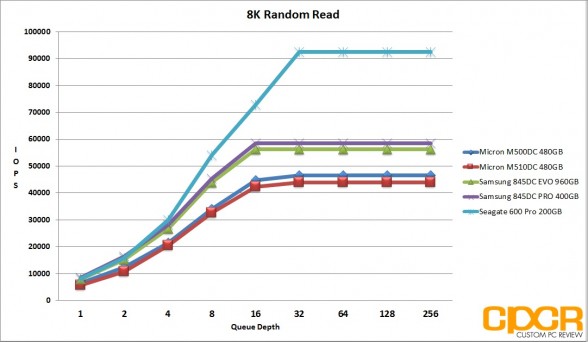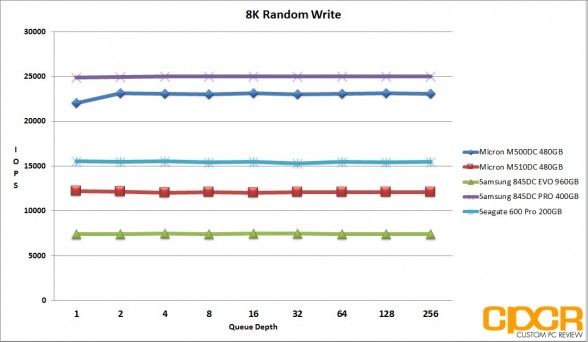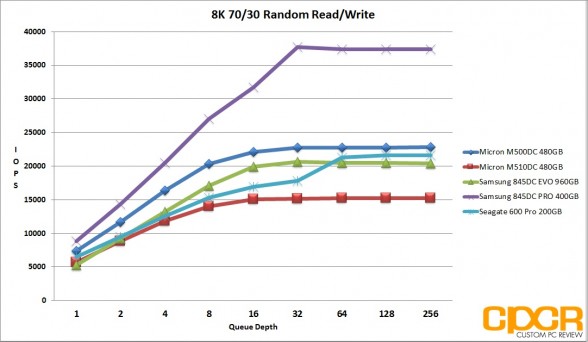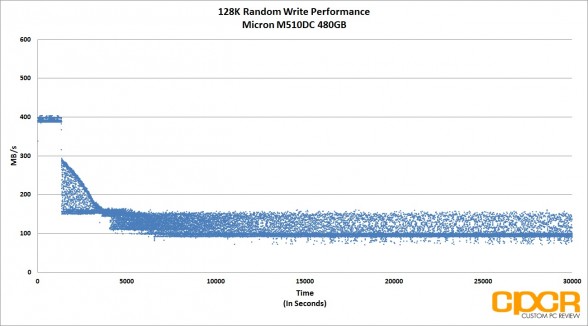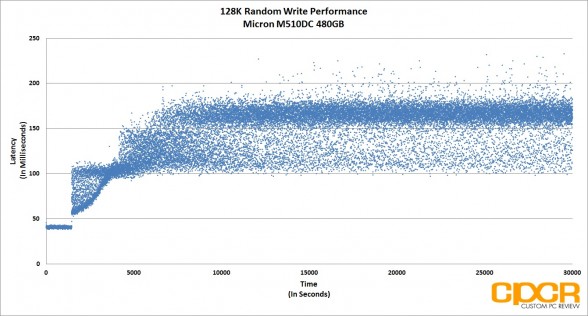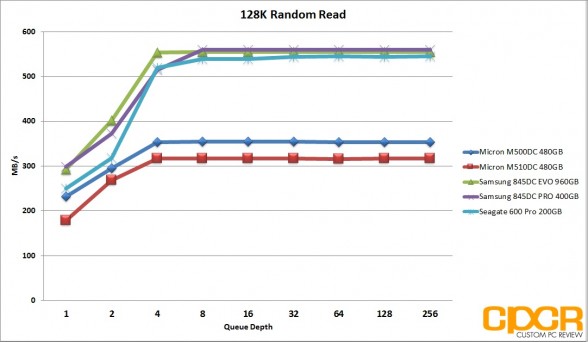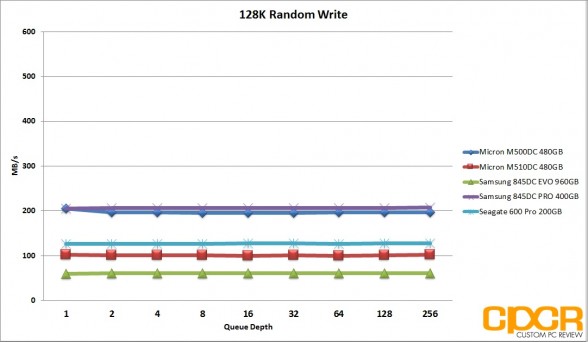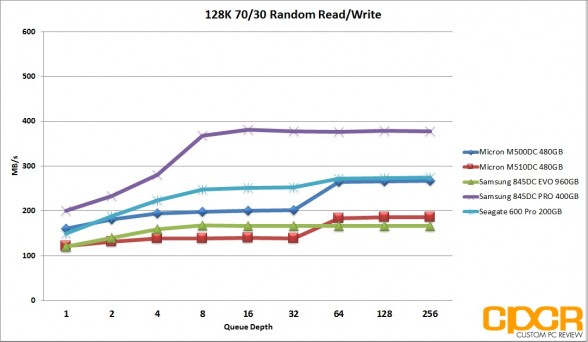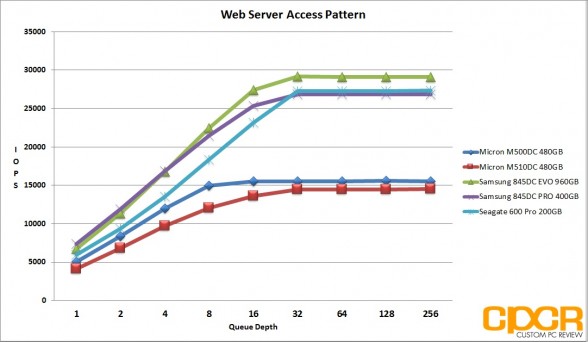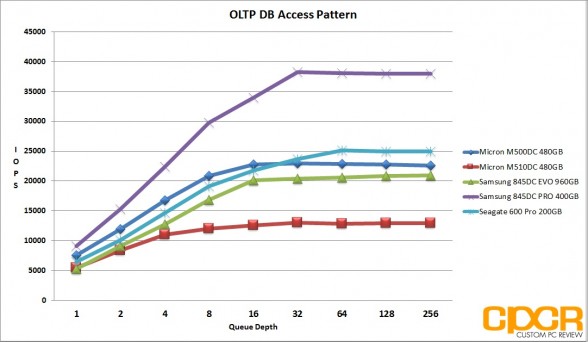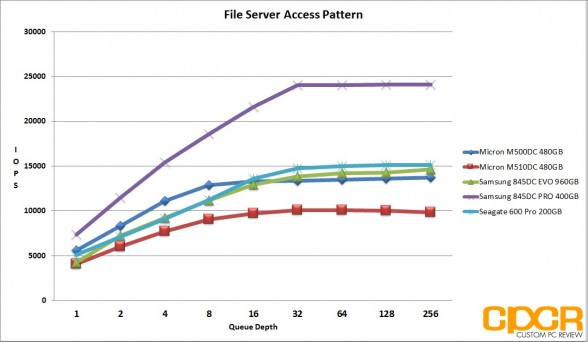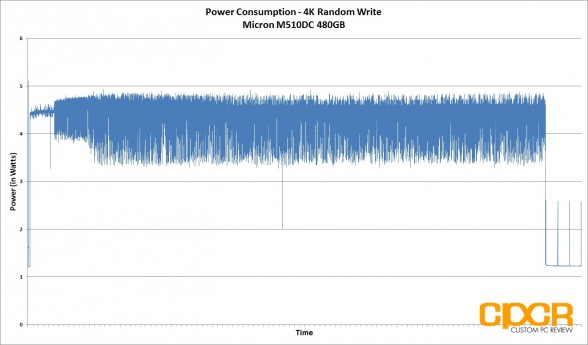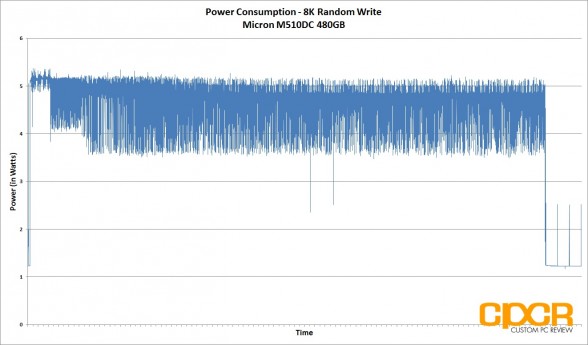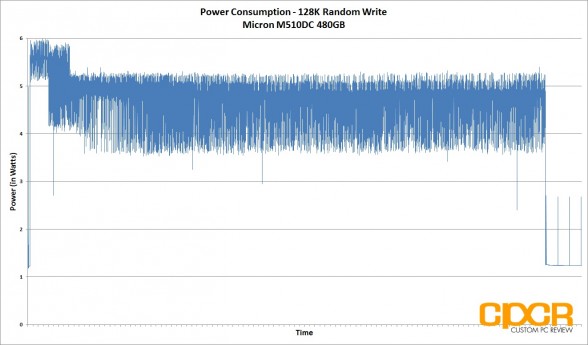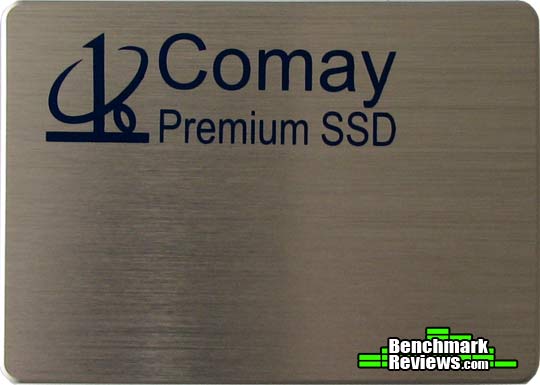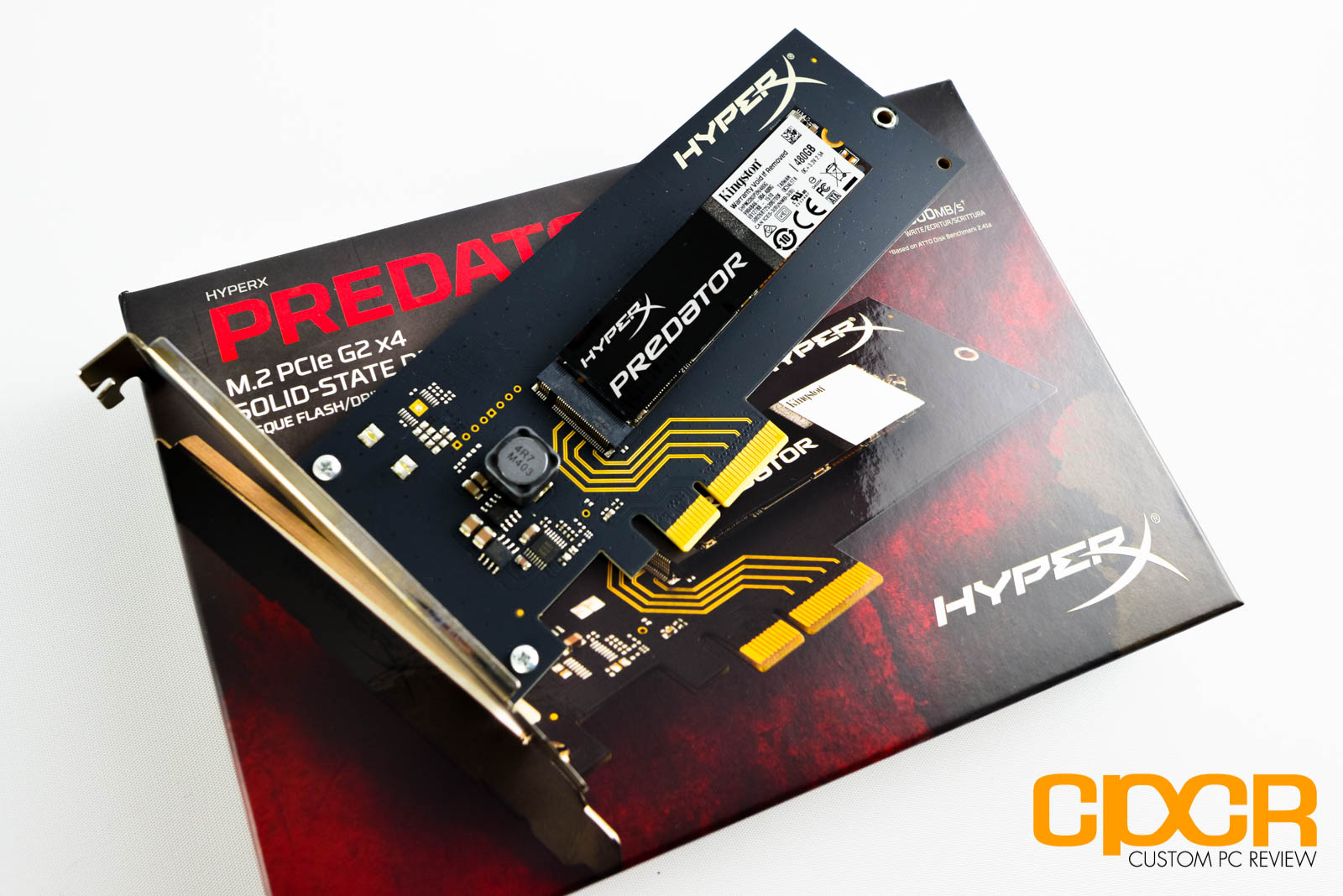[section label=1. Introduction]
16nm cMLC in the Enterprise
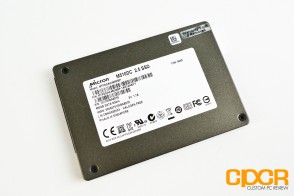 Last year, we reviewed the Micron M500DC SSD which was a low cost enterprise SSD designed for the cloud/hyperscale server market. At the time, enterprise SSDs were generally expensive, high endurance drives that were simply overkill for read intensive applications that simply don’t need the high endurance or write performance. As such, Micron unveiled the Micron M500DC which utilized consumer grade NAND and lots of overprovisioning. By doing so, Micron was able to significantly lower cost while still maintaining enterprise level reliability.
Last year, we reviewed the Micron M500DC SSD which was a low cost enterprise SSD designed for the cloud/hyperscale server market. At the time, enterprise SSDs were generally expensive, high endurance drives that were simply overkill for read intensive applications that simply don’t need the high endurance or write performance. As such, Micron unveiled the Micron M500DC which utilized consumer grade NAND and lots of overprovisioning. By doing so, Micron was able to significantly lower cost while still maintaining enterprise level reliability.
Building off the Micron M500, Micron recently also unveiled the M510 SSD which, like the M500DC, is designed for the cloud/hyperscale market, but more specifically designed for those looking for an even more cost effective version of the M500 at the expense of endurance.
Micron M510DC Specifications
| Manufacturer | Micron | |||
|---|---|---|---|---|
| Model | M510DC | |||
| Controller | Marvell 88SS9187 | |||
| NAND | 16nm Micron Synchronous NAND | |||
| Form Factor | 2.5″ 7mm SATA | |||
| Interface | SATA 6GB/s | |||
| Capacity | 120GB | 240GB | 480GB | 960GB |
| Sequential Reads | 420 MB/s | 420 MB/s | 420 MB/s | 420 MB/s |
| Sequential Writes | 170 MB/s | 290 MB/s | 380 MB/s | 380 MB/s |
| 4K Random Read | 63,000 IOPS | 63,000 IOPS | 63,000 IOPS | 65,000 IOPS |
| 4K Random Write | 12,000 IOPS | 18,000 IOPS | 23,000 IOPS | 10,500 IOPS |
| Endurance | 460TBW (~2DWPD) | 920TBW (~2DWPD) | 1850TBW (~2DWPD) | 1140TBW (~0.65DWPD) |
The Micron M510DC will be available in capacities of 120GB, 240GB, 480GB, and 960GB. Like the M500DC, the M510DC will only be available in the 2.5″ 7mm SATA form factor. Internally, the Micron M510DC is very similar to the Micron M500DC. It’ll still use the same Marvell 88SS9187 controller we’ve seen for years albeit with a slightly re-tuned firmware. The biggest difference is that Micron is switching up the NAND, employing their latest 16nm Synchronous MLC rather than the 20nm Synchronous MLC used on the Micron M500DC. Ultimately, this means that the Micron M510DC isn’t going to see a ton of difference in terms of performance compared to the M500DC, but any move to a finer lithography should result in some significant cost savings.
Just like the Micron M500DC, endurance on the Micron M510DC is variable depending on drive capacity. The 120GB, 240GB, and 480GB is rated at ~2DWPD while the 960GB drive is rated at ~0.65DWPD. This is significantly less than the M500DC, which is rated at ~3DWPD for the 120GB, 240GB, and 480GB, and ~2DWPD for the 800GB. This is partly due to the fact that 16nm Synchronous MLC NAND is less durable compared to 20nm Synchronous MLC NAND and the fact that Micron has decided to reduce the amount of overprovisioning for the Micron M510DC as well.
While it may seem strange that Micron is unveiling a new product so similar to their previous products, according to Micron’s internal research, they found that customers are looking for value over high drive endurance as approximately 64-66% of datacenters will only need drives with 1DWPD or less.
In terms of other features, the Micron M510DC also employs Micron’s XPERT (eXtended Performance and Enhanced Reliability Technology) which is a bundle of technologies Micron includes for their enterprise SSDs. This set of features includes full datapath protection, power loss protection, adaptive read management and more. Additional information on XPERT can be found in Micron’s datasheet here.
New for the Micron M510DC is also TCG Enterprise which is a new data security standard which will protect data at rest via hardware encryption. For supported platforms, TCG Enterprise will generate an encryption key that effectively “marries” the SSD to the host. If a drive is removed from the host, then the data onboard cannot be read. I can see this being particularly useful for datacenters that need to quickly and securely dispose of drives either at end of life or during an upgrade cycle.
That said, let’s take a closer look at the Micron M510DC.
[section label=2. A Closer Look]
A Closer Look at the Micron M510DC 480GB
Here’s a look at the Micron M510DC 480GB.
Inside the casing, we get a full sized PCB for the 480GB unit. There’s plenty of additional space available, which is likely used for the 960GB model.
The controller onboard is a Marvell 88SS9187-BLD2 which is a fairly old high performance 8 channel controller that’s been around for quite a few years. We’ve seen it on numerous client and enterprise drives in the past including the Micron M500DC.
The biggest difference between the Micron M510DC and the Micron M500DC is the NAND. For the Micron M510DC, Micron is using their latest 16nm Synchronous MLC NAND while the Micron M500DC uses their 20nm Synchronous MLC NAND. Onboard the Micron M510DC 480GB, there’s 5 NAND packages for a total of 640GiB. Total usable capacity on the drive is 480GB, so the drive is overprovisioned by 25%.
Onboard the Micron M510DC 480GB is also two 512MB DDR3 DRAM chips for a total of 1GB DRAM cache.
As a part of Micron’s XPERT enterprise feature-set, onboard the Micron M510DC is also an array of capacitors that allow the drive to protect itself against both data in flight and data at rest against sudden power loss.
[section label=3. Test Setup/Drive Information]
Haswell Test Bench
| System | CyberPowerPC Gamer Xtreme 4200 |
|---|---|
| CPU | Intel Core i7 4770K |
| Motherboard | ASUS Z87-A |
| Memory | Kingston HyperX Genesis 16GB DDR3 2133MHz |
| Graphics | Intel HD4600 Graphics |
| Storage | OCZ Vertex 4 256GB |
| Power Supply | Corsair HX650 |
| Case | HSPC High Speed Tech Station |
| Optical Drive | ASUS OEM DVD Drive |
| Operating System | Windows 8 64 bit & CentOS 6.4 |
Special thanks to CyberPowerPC, Kingston, OCZ Technology and HSPC for sponsoring our test bench!
Crystal Disk Info
Micron M510DC 480GB
Today we’ll be reviewing the Micron M510DC with firmware version 0005.
[section label=4. 4K Random Read/Write Performance]
Micron M510DC 480GB Performance
4K Random Write Preconditioning
Before our 4K Random Read/Write performance testing, we’ll first precondition our enterprise SSD by secure erasing the drive then hammering it with a little over 30,000 seconds worth of 4K random writes at QD32. By recording the IOPS and latency every second during our run, it’s easy to see what kind of write performance can be expected as our SSD transitions from its fresh out of the box state into steady state.
4K Random Read/Write Performance
After our 4K random write preconditioning, we then run two more passes of 4K random data through the enterprise SSD for consistency before conducting our actual testing below.
Performance Analysis
As a drive designed for read intensive workloads, the Micron M510DC 480GB does a very good job in 4K random reads with performance coming in at just under 88,000 IOPS. Surprisingly, 4K random writes are decent as well as it was able to reach 24,000 IOPS, which is just under double the performance of the Samsung 845DC EVO. Mixed workload performance unfortunately didn’t fare as well with the drive maxing out at just 30,000 IOPS.
Latency wasn’t an issue in our testing with latencies coming in at under 8ms throughout our entire pre-conditioning run. However, I am a bit concerned with the performance consistency. Generally speaking, it’s not too common to see enterprise drives with such huge variances in write performance as seen on the Micron M510DC 480GB. That said, the Micron M510DC is designed to be used for mostly read applications, so it’s not a huge concern.
[section label=5. 8K Random Read/Write Performance]
Micron M510DC 480GB Performance
8K Random Write Preconditioning
Before our 8K Random Read/Write performance testing, we’ll first precondition our enterprise SSD by secure erasing the drive then hammering it with a little over 30,000 seconds worth of 8K random writes at QD32. By recording the IOPS and latency every second during our run, it’s easy to see what kind of write performance can be expected as our enterprise SSD transitions from fresh out of the box into steady state.
8K Random Read/Write Performance
After our 8K random write preconditioning, we then run two more passes of 4K random data through the enterprise SSD for consistency before conducting our actual testing below.
Performance Analysis
For 8K random workloads, the Micron M510DC 480GB’s biggest strength was once again its random write performance. In our testing, the Micron M510DC 480GB was capable of up to 12,000 IOPS, which once again was significantly better than the Samsung 845DC EVO. Unfortunately despite the positive showing in write performance, 8K random read and mixed workload performance wasn’t as impressive, falling to the bottom of our charts.
[section label=6. 128K Random Read/Write Performance]
Micron M510DC 480GB Performance
128K Random Write Preconditioning
Before our 128K Random Read/Write performance testing, we’ll first precondition our enterprise SSD by secure erasing the drive then hammering it with a little over 30,000 seconds worth of 128K random writes at QD32. By recording the IOPS and latency every second during our run, it’s easy to see what kind of write performance can be expected as our enterprise SSD transitions from its fresh out of the box state into steady state.
128K Random Read/Write Performance
After our 128K random write preconditioning, we then run a two more passes of 4K random data through the enterprise SSD for consistency before conducting our actual testing below.
Performance Analysis
Sequential performance was fairly similar to what we saw with 4K and 8K performance. The Micron M510DC 480GB was able to outperform the Samsung 845DC EVO in writes, but fell short in reads.
[section label=7. Server Access Patterns]
Micron M510DC 480GB Performance
Server Access Patterns
While synthetic workloads are great indicators of a SSD’s performance, it’s not always indicative of how a SSD is actually going to be used in the real world. Very few applications for example will run continuous passes of 4K data at QD256. This is why we also run testing using typical access patterns users would face in the real world.
Testing here is conducted after a secure erase is performed followed by two full passes of 128K data and two full passes of 4K random data.
Web Server Access Pattern
Our web server access pattern simulates the type of activity found in a typical web server. The access pattern is made up of 100% reads with blocksizes ranging from 512b up to a maximum of 512K.
Access Pattern: 100% Read / 512b=22%, 1K=15%, 2K=8%, 4K=23%, 8K=15%, 16K=2%, 32K=6%, 64K=7%, 128K=1%, 512K=1%
OLTP/Database Access Pattern
Our OLTP/Database access pattern simulates typical online transactional processing and database workloads. The access pattern here is made up to 67% reads and 33% writes at the 8K blocksize.
Access Pattern: 67% reads, 33% writes / 8K=100%
File Server Access Pattern
Our file server access pattern simulates a typical fileserver. The access pattern here is made up of 80% reads and 20% writes with blocksizes ranging between 512b to 64K.
Access Pattern: 80% reads, 20% writes / 512b=10%, 1K=5%, 2K=5%, 4K=60%, 8K=2%, 16K=4%, 32K=4%, 64K=10%
Performance Analysis
In our server profiles, the Micron M510DC 480GB struggled to compete with the rest of the SSDs in our testing lineup.
[section label=8. Power Consumption]
Micron M510DC 480GB Power Consumption
For our power consumption testing today, we’ll be conducting a trace on power draw during our 4K, 8K and 128K preconditioning runs. All power testing below is measured by tapping our calibrated B&K Precision 5491B Bench Multimeter directly into the 5v line running from the power supply to the drive.
Performance Analysis
Idle power consumption on the Micron M510DC 480GB was ~1.2w while maximum power consumption was just under ~6w during our 128K random write testing. The Micron M510DC 480GB was relatively efficient although not as efficient as some of the previous drives we’ve seen such as the Samsung 845DC EVO or the Samsung 845DC PRO.
[section label=9. Conclusion]
Micron M510DC 480GB Conclusions
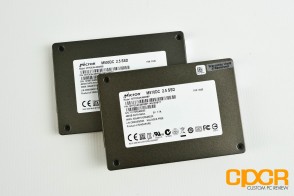 Over the past few years, Micron has really been rounding out their enterprise SSD lineup with not only high end PCIe SSDs such as the Micron P420m and the Micron P320h, but also value products such as the M500DC and now the M510DC. Personally, I think the Micron M510DC is really a perfect example of Micron catering towards their enterprise customers demands as the M510DC is essentially an even more entry level M500DC designed to be as cost competitive as possible yet still carry the basic features of an enterprise product.
Over the past few years, Micron has really been rounding out their enterprise SSD lineup with not only high end PCIe SSDs such as the Micron P420m and the Micron P320h, but also value products such as the M500DC and now the M510DC. Personally, I think the Micron M510DC is really a perfect example of Micron catering towards their enterprise customers demands as the M510DC is essentially an even more entry level M500DC designed to be as cost competitive as possible yet still carry the basic features of an enterprise product.
Performance for the Micron M510DC was fairly average across the board and even slightly lower than what we saw from the M500DC. This of course was expected as the M500DC is heavily over-provisioned to as much as ~62% while the M510DC is quite a bit more conservative with over-provisioning up to just ~25%. That being said, I still would’ve really liked to see a bit more read performance in all areas, especially sequential reads. Considering that the Micron M510DC is designed specifically for read intensive workloads, the read performance is a bit lackluster especially in the sequential read department.
| Manufacturer | Micron | Micron | Micron | Micron |
|---|---|---|---|---|
| Model | M510DC | M510DC | M510DC | M510DC |
| SKU | MTFDDAK120MBP-1AN1ZABYY | MTFDDAK240MBP-1AN1ZABYY | MTFDDAK480MBP-1AN1ZABYY | MTFDDAK960MBP-1AN1ZABYY |
| Capacity | 120GB | 240GB | 480GB | 960GB |
| Street Price | $149.99 | $229.99 | $379.99 | $597.99 |
| Price/GB | ~$1.25 | ~$0.96 | ~$0.79 | ~$0.62 |
| Check Price | Click Here | Click Here | Click Here | Click Here |
The Micron M510DC 480GB is currently available for $379.99, which is ~$0.79/GB. In the realm of enterprise SSDs, this is fairly inexpensive and puts the Micron M510DC on the same pricerange as the competing Samsung 845DC EVO. That being said, the Micron M510DC has significantly higher endurance, better write performance, and TCG Enterprise.
Ultimately, Micron’s M510DC is a solid SSD delivering a full feature-set, great reliability and great pricing. Businesses that can accept the lower performance of the Micron M510DC will find it a solid purchase.
Sample provided by: Micron
Available at: CDW

